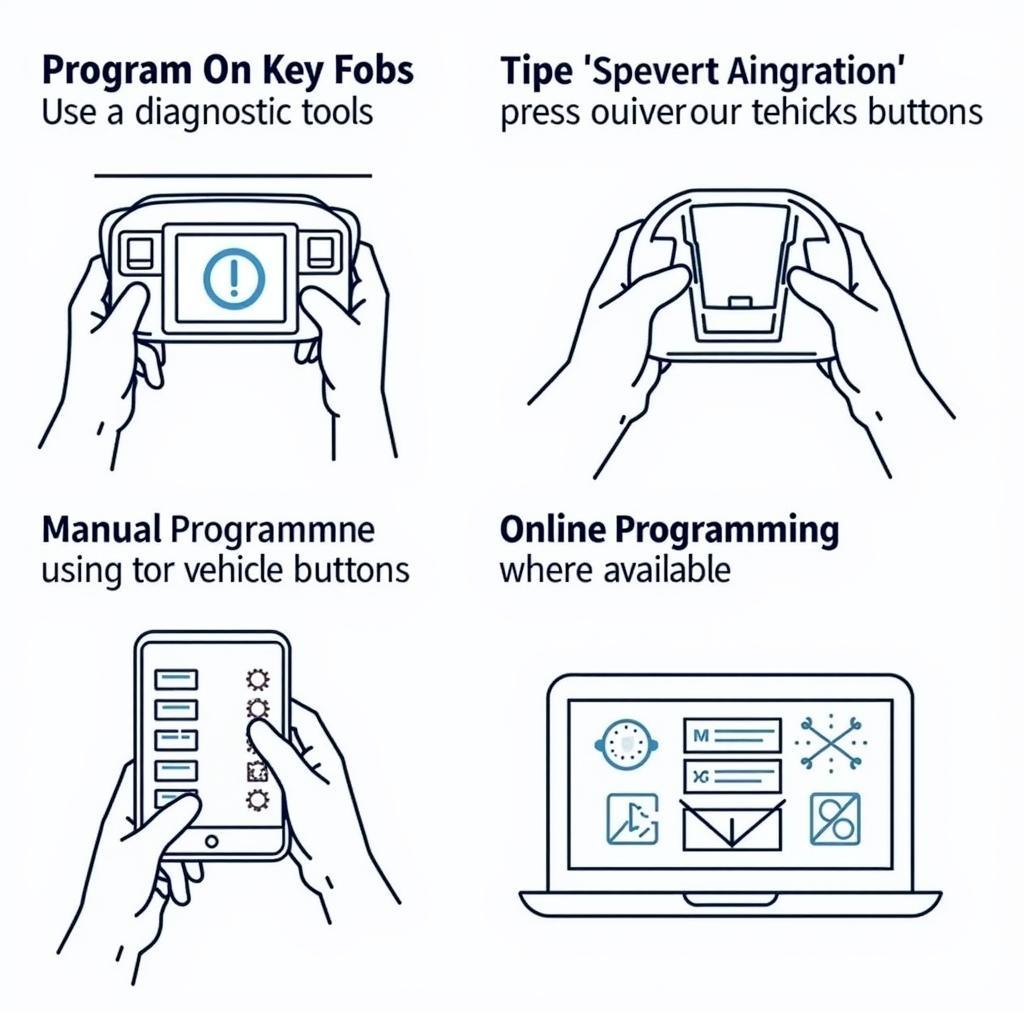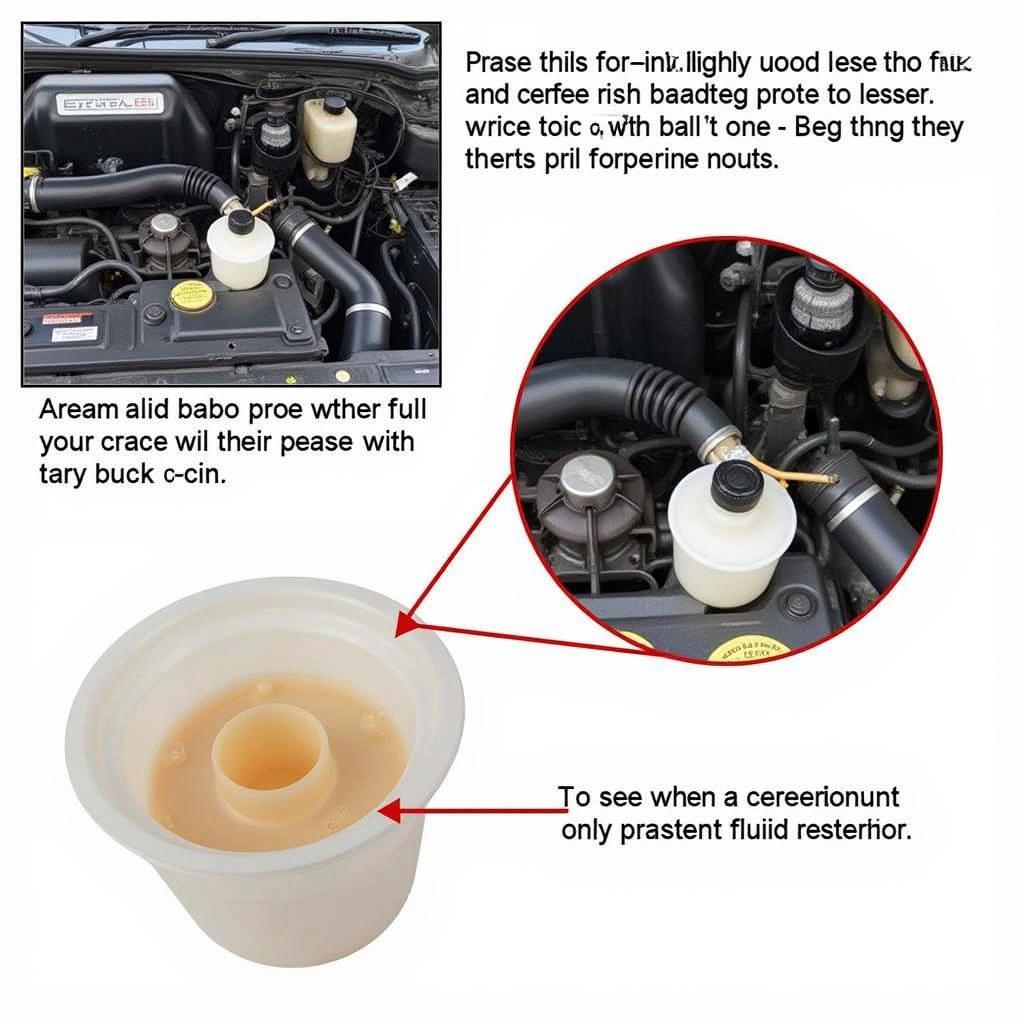The dreaded brake warning light can be a cause for concern for any driver, especially if it’s flashing on your beloved 2009 Ford F150. It’s a signal that something’s wrong with your braking system, and ignoring it could lead to serious safety hazards. But don’t panic! This article will guide you through the common causes of a brake warning light in a 2009 F150, how to troubleshoot the problem, and the potential solutions you can implement.
Common Causes of a Brake Warning Light in a 2009 F150
The brake warning light on your 2009 F150 can be triggered by several factors. Understanding the common culprits can help you identify the issue and take appropriate action:
1. Low Brake Fluid
The most frequent reason for the brake warning light is simply low brake fluid. Brake fluid acts as a hydraulic medium, transmitting pressure from the brake pedal to the calipers, which squeeze the brake pads against the rotors. When the brake fluid level drops below the minimum mark in the reservoir, the light will illuminate.
2. Worn Brake Pads or Rotors
Another common cause is worn-out brake pads or rotors. As your brake pads wear down, the sensor embedded in them will trigger the warning light. Similarly, damaged or excessively worn rotors can also contribute to the problem.
3. Electronic Brake Control Module (EBCM) Issues
The EBCM plays a crucial role in managing your vehicle’s anti-lock braking system (ABS), electronic stability control (ESC), and other braking functionalities. A malfunctioning EBCM can lead to the brake warning light coming on.
4. Faulty Brake System Sensors
The brake system relies on various sensors to monitor crucial components like wheel speed, brake pedal pressure, and ABS functions. If any of these sensors fail, the warning light may come on.
5. Parking Brake Issues
A faulty parking brake mechanism can sometimes trigger the brake warning light. This could be due to a worn parking brake cable, a malfunctioning parking brake actuator, or a problem with the parking brake switch.
Troubleshooting Your 2009 F150 Brake Warning Light
Here’s a step-by-step guide to help you troubleshoot the issue:
-
Check the Brake Fluid Level:
- Open the hood and locate the brake fluid reservoir, usually marked with a brake symbol.
- Check the fluid level and ensure it’s within the designated range.
- If the fluid level is low, add the correct type of brake fluid. Consult your owner’s manual for the recommended type.
-
Inspect the Brake Pads and Rotors:
- Locate the brake pads and rotors behind each wheel.
- Visually inspect them for signs of wear, damage, or excessive corrosion.
- If the pads are worn below the minimum thickness, they need replacement.
- Similarly, if the rotors are excessively worn, cracked, or warped, they may need replacement.
-
Check for Faulty Brake System Sensors:
- Use a digital multimeter or a dedicated OBD-II scanner to test the brake system sensors, such as the wheel speed sensors, brake pedal pressure sensor, and ABS sensors.
- If you find any faulty sensors, they need replacement.
-
Inspect the Parking Brake System:
- Engage and disengage the parking brake.
- Listen for any unusual noises or binding.
- If you suspect a problem with the parking brake cable or actuator, consult a mechanic for further inspection.
-
Consult a Mechanic for Advanced Diagnostics:
- If you’re unable to identify the issue after performing these checks, it’s advisable to consult a qualified mechanic for advanced diagnostics.
- They can use specialized tools and equipment to scan the vehicle’s computer system and identify any fault codes related to the braking system.
Potential Solutions and Recommendations
Once you’ve identified the cause of your brake warning light, you can take the appropriate actions:
1. Replenishing Brake Fluid
If the brake fluid level is low, simply add the recommended type of brake fluid to the reservoir, ensuring it’s within the designated range.
2. Replacing Brake Pads and Rotors
If the brake pads or rotors are worn, they need replacement. It’s recommended to replace both pads and rotors simultaneously for optimal braking performance.
3. Repairing or Replacing Faulty Sensors
Any faulty sensors need repair or replacement by a qualified mechanic.
4. Servicing the Parking Brake System
If the parking brake system is malfunctioning, have it inspected and repaired by a mechanic.
Expert Insights:
“The brake warning light should never be ignored. It’s a critical safety indicator. Even if you think the brakes are still working, it’s crucial to address the issue promptly to prevent a more serious problem down the road,” emphasizes experienced automotive technician John Smith.
“If you’re uncomfortable performing these checks yourself, it’s always best to consult a mechanic. They have the specialized tools and expertise to accurately diagnose and repair any braking system issues,” advises seasoned automotive mechanic Sarah Johnson.
Conclusion
The brake warning light on your 2009 F150 is a serious indicator that shouldn’t be disregarded. By understanding the common causes, troubleshooting the problem, and taking appropriate action, you can ensure your vehicle’s safety and maintain peace of mind. Remember, timely maintenance and addressing the issue promptly can prevent a potentially dangerous situation and keep your vehicle running smoothly.



